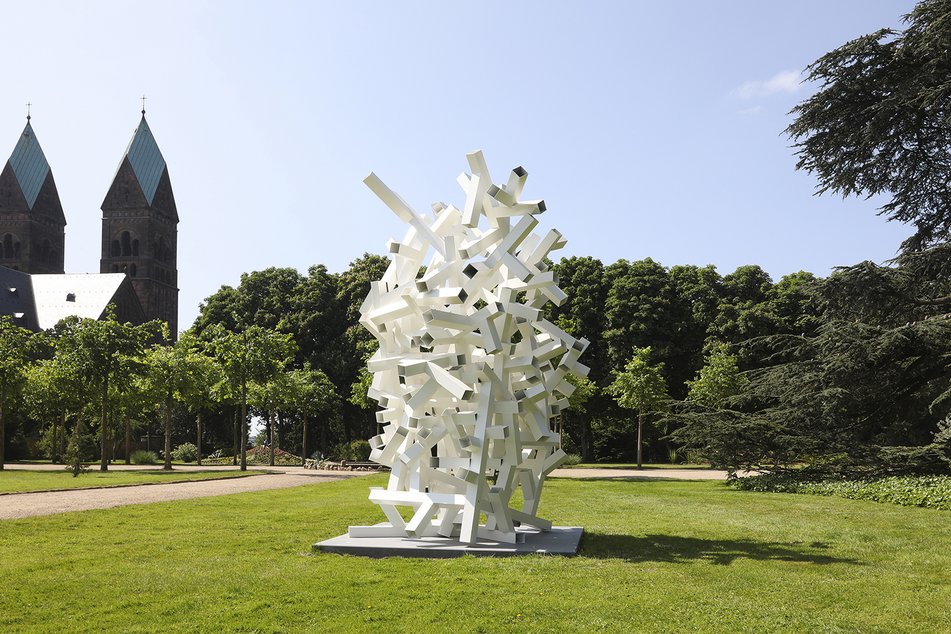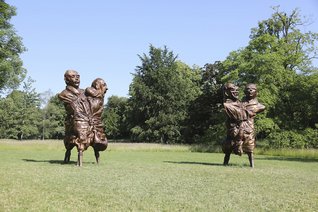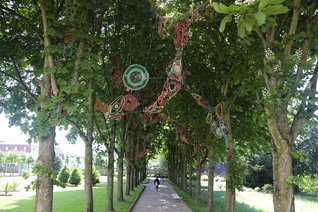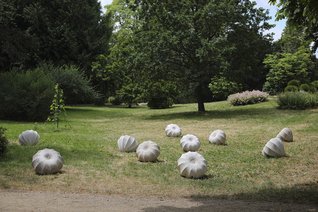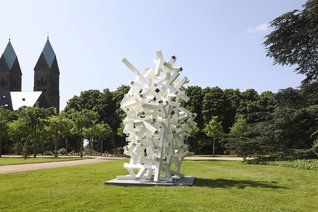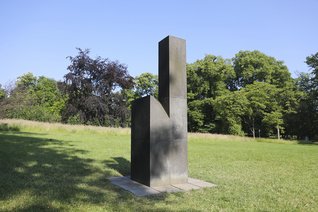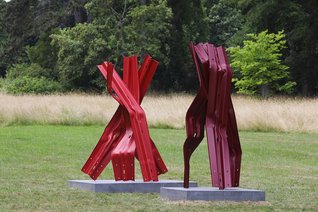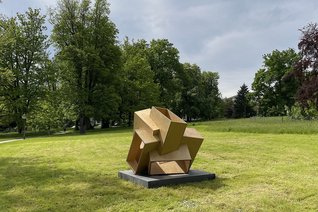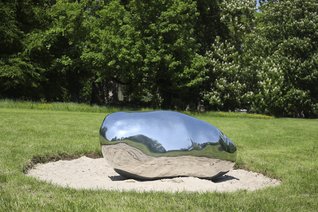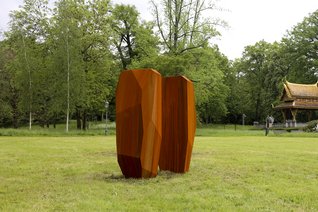Ruud Kuijer
(The Netherlands) *1959 in Schalkwijk
Ruud Kuijer made his name internationally with his ambitious large-scale project “Waterwerken” (Waterworks), installed on the Amsterdam-Rhine canal near Utrecht, as well as with his monumental outdoor works in Melbourne and Panama City. In Blickachsen 12, he is showing altogether ten of his unmistakeable works in Bad Vilbel, Eschborn and Frankfurt. His sculptures are abstract spatial compositions in reinforced concrete: geometrical, linear and flat, sometimes even massive-seeming structural elements are combined into apparently unstable spatial arrangements. Playfully, Kuijer often also incorporates recognizable objects when he constructs his casting moulds from form elements taken from found or fragmented everyday items. As his working material, he uses an exceptionally thin concrete specially developed for him, which in the casting process can flow freely from one part of the mould to the other, and whose surface structure precisely reproduces that of his model. In Bad Vilbel, the rather compact “Kolomskulptuur II” (Column Sculpture), the work “Staffetta I” (Relay Race) with its seemingly precariously balanced elements and the open “Vensterskulptuur V” (Window Sculpture), give an insight into the range of expressive forms in the work of Ruud Kuijer.
The sculptural articulation of space lies at the heart of Ruud Kuijer’s work. Kuijer, who also taught at the Academy of Arts in Berlin, explores the plastic qualities of different formal elements, experimenting with weight and statics, equilibrium and gravity, movement and counter movement. In the process, he developed a distinct language of sculptural forms, and through his choice of material, aligns himself historically with the use of concrete as architectural material since the 1920’s. In addition, he often selects a particular architectonic element as the starting point of his works. An example of this is his “Vensterskulptuur V”, on display in Eschborn in Blickachsen 12. Here also, displacements of movement, the shifting of weight and perspective are critical. Kuijer preserves the concrete appearance of all his works, and thus stresses their abstract character – even when he breaks this open again by playfully incorporating foreign objects, as in “Staffetta II” and in the untitled work on display in Eschborn. At each of the Blickachsen 12 locations showing Ruud Kuijer’s work, there is a group of his works representing the different characteristics of his formal canon, and revealing contrasts as much as similarities.
Immediately in front of the entrance to the Poelzig building on the Campus Westend in Frankfurt, the almost eight-metre-high concrete sculpture “Hangend Vlak” (Suspended Surface) by Ruud Kuijer makes a powerful impression. Like Kuijer’s smaller works in concrete, this also was cast in one piece. Despite its size and immense weight of 13 tons, the work conveys an impression of dynamic energy and playful lightness. A variety of pillars, blocks and slabs seem to stand or sit on each other in a precarious balance, to lean on each other or, as suggested by the title, to hang in defiance of gravity. The loose arrangement of formal components in this sculpture contrasts, in its exhibition location, with the strict geometry of the university building. At the same time, the sculpture’s light grey concrete enters into a dialogue with the yellow-brown natural stone of the building’s façade. Three further characteristic works by Ruud Kuijer are installed in the campus grounds behind the Poelzig building. As in Bad Vilbel and Eschborn, here, also, the larger than life-sized sculptures, entitled “Kolomskulptuur IV”, “Staffetta III” and “Vensterskulptuur I” have been placed together to form a richly contrasting group.
